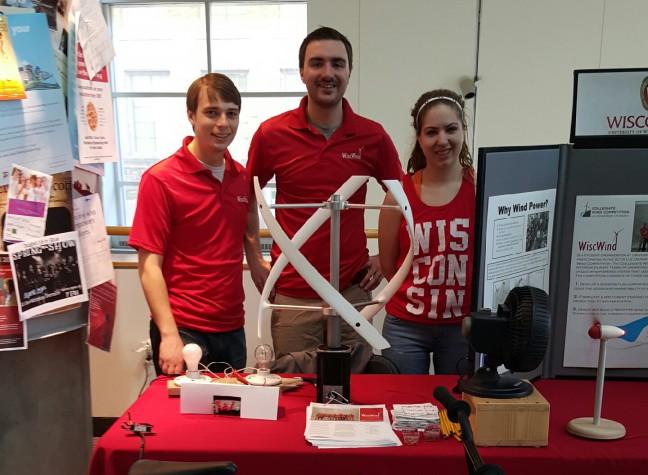A team of students from University of Wisconsin is headed to New Orleans to compete in the U.S. Department of Energy Collegiate Wind Competition next month with their innovative wind turbine design.
The Department of Energy hosts competitions on a biannual basis, and this is the first year a team from UW was selected to compete, Scott Williams, research and education coordinator for the Wisconsin Energy Institute, said.
Williams, a UW alum, rallied faculty last year to submit an application to the Collegiate Wind Competition before recruiting 15 students to a team.
Since September, the team has been working to design a small wind turbine with helical-shaped blades, which resemble the spiral structure found in DNA.
Dubbed WiscWind, the Wisconsin group is one of just 12 teams accepted into the 2016 national competition.
While WiscWind is predominantly a mix of engineering students, the team also includes individuals pursuing degrees in business and sustainability. The competition is judged on three components: a detailed business plan, a working wind power system prototype and an identified project location and implementation strategy, Williams said.
For students, Williams said the hands-on experience working with wind energy makes them more employable in the sustainability industry after graduation.
But for team co-leader Benjamin Kufahl, a self-identifiying “super-senior” and one of the four mechanical engineering students on the team, the chance to work with an interdisciplinary team is the greatest benefit to being a member of WiscWind.
“[Interdisciplinary work] is what you see in industry … it’s so cool to be all working together for a common goal,” Kufahl said.
Having a team of students from a variety of backgrounds also helps round out the group’s knowledge base, Kufahl said.
The small turbine’s specially-shaped blades are 3D printed in Blue Mounds, Wisconsin, Kufahl said. The rest of the prototype is machined on campus in the College of Engineering student shop.
The structure of a turbine tower is a substantial portion of the turbine’s overall cost, Kufahl said, so focusing on a mountable prototype drastically reduces the cost by removing the responsibility of building an entirely new tower.
While the students get experience working in the wind power industry through WiscWind, Williams noted some of the team members are also earning credits toward a certificate in engineering for energy sustainability.
Another course on campus, an entrepreneurship class in the School of Business called Venture Creation, also gives students course credit for their work with WiscWind, Williams said.
Last fall, Venture Creation supported WiscWind by helping the team execute their market research and identify a hypothetical site location for the wind turbine. They ultimately designated India as their target market and site, Kufahl said.
The team decided to design a wind turbine to be used in India for three primary reasons: it is a country rich in wind resources, much of its population is without electricity and damaging diesel engines currently power its cell towers.
The team wants to design a wind turbine prototype capable of being mounted to cell phone towers in India, Kufahl said.
The combination of his working knowledge and technical writing skills landed him a spot on the team’s roster, Kufahl said.
Kufahl said it is exciting to see some of his ideas being implemented into the final design of the wind turbine, but he’s most interested in the sustainability side of the project.
“Truthfully, I think [sustainability] is a big problem with the world right now, we don’t have large scale solutions … [and a large] reliance on non-sustainable sources,” Kufahl said. “Transitioning to a completely sustainable system is going to be difficult.”
The competition will be held in New Orleans at the American Wind Energy Association Conference and Exhibition from May 23-26.


















